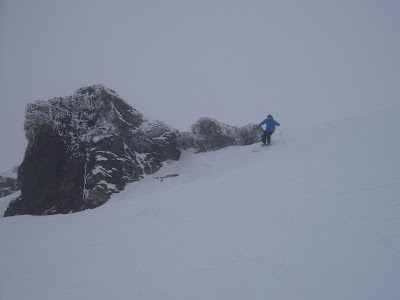 |
| Just one of the views from Sugarbush on December 10, 2012 |
With Sugarbush opening on time this season, we were able to conduct a ‘Train the Trainers Day’ on snow for the first time in a while. Those of us on the training staff were able to ski together for the day, walk through the clinics we required for all instructors on our staff, and generally make sure we’re all on the same page for our season-long training program. The day was a blast, and it gave me confidence that I’ll be able to effectuate a positive change in our organizational culture and in the quality of the product we deliver on the hill.
Training can be a large expense for snowsports schools and those of us in management occasionally have to make the case that including more training in our budgets is money well-spent. Those times are an important gut check for us, putting us in a position to make a business-focused argument for why training is so important. It’s a similar argument made by environmentalists arguing that being green is good for business – it’s an upfront cost that generates better quality, a better experience, and more business as a consequence. Those snowsports schools with large and well-managed training programs and staffs that have an expectation that ongoing training is a normal and desirable part of their everyday existence as pros tend to be the most successful in the business. It’s not a coincidence.
One of the issues I’ve faced over the past eight years since achieving my ‘full cert’ – my PSIA Level III, the highest certification available in the USA – is that I’ve received precious little training. I’ve conducted an awful lot of training clinics for instructors, both at the resorts where I work and elsewhere, but I’ve been battling my constant fear that I’ll plateau as a skier and as a ski teacher. It’s left me to have to occasionally seek out training, sometimes far from home and at significant expense. It’s always worthwhile, but the fact is that those days where I can focus on my own continuing development are too few and far between. That is, until next week.
I’ve been invited to participate in an extraordinary block of training. A few of us, very few, who are at approximately the same level within PSIA and in the industry here in the Eastern USA have the opportunity to spend several days next week training with the PSIA National Alpine Team Coach, Rob Sogard. The PSIA National Alpine Team (like its snowboard, nordic and adaptive siblings) is more than simply the national team of ski instructors. The team is responsible for the continuing development of the American Teaching System, for developing national programs and standards, and for generally setting the tone and agenda for snowsports teaching in America. There’s a lot of very effective trickle down between the national team members and local, entry-level instructors, and the various rungs on the PSIA ladder and each resort’s training staff are the principal vehicles for this. What this means for me is that next week I’ll get a significant chunk of time to hone my skiing, my understanding of skiing, my teaching, and my awareness of where skiing is headed from the very best in the business.
I have significant anxiety about taking the time away from work next week, but my expectation is that I’ll be able to bring my experience home to Sugarbush and share it in a meaningful way with our staff. Ultimately, the goal is to transfer all that I learn through to our guests, though I definitely won’t be explaining to our guests about my time spent with the trainers’ trainers’ trainer. So, it’s back to school for me even if only for a few days, and I just can’t wait!



.JPG)
.JPG)
.JPG)
.JPG)


.JPG)
.JPG)
.JPG)
.JPG)
.JPG)
.JPG)


.JPG)



.JPG)
.JPG)
.JPG)
.JPG)
.JPG)
.JPG)
.JPG)

.jpg)
.jpg)


